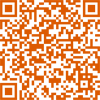cv | works | sculptures | site specific | environmental | land art | architectural | publications | exhibitions | symposia/lectures | cities | encounters | accounts
MAQUETTES and MODELS
Zaanstad - steel construction | sculpture -
victory
wood, paint, pencil, and plastic
an urban setting invaded
The sculpture was large enough (44 meters wide) to scale the model down to 1:100. I took a section of the river's shoreline and chose the orientation of the maquette perpendicular to the river Zaan. As this was a complete urban space and all was stone, I chose a monochrome painted wood in order to dematerialize any natural association, which would set the tone for misinterpretation and misguide the viewer.
I also used pencil and color pencil sparingly to avoid the somewhat blunt result a layer of paint can give.
Peter the Great
Tsar Peter the Great spent some time near this location, he slept in a house on this same street. He had come to Zaandam in Holland to learn the shipbuilding here. He had come disguised as a common sailor. This part of the greater town, now called Zaanstad, used to be the village Koog aan de Zaan. I mention this because at the time this page is being made I am preparing an exhibition in St. Petersburg where I will show my scale models and maquettes. This project - my sculpture which stood in Zaanstad - will be given extra attention.
In the sixties of the twentieth century a highway was plowed through its heart (the old town hall can be seen behind the viaduct). The resulting space under the bridge became a miserable location. Artists were asked to make proposals for a solution; we are always asked to make wrong right. I studied the location and the history of Zaanstad. The morbid area under the bridge bordered on the River Zaan, but the flat planes of the pylons blocked the view. The shipbuilding history influenced me in a way that I chose to make a sculpture with large sail-like wings, constructed in a way as to suggest the prow of a ship projecting from under the bridge in the direction of the street (Raadhuisstraat).
The only way to go about this problem, I said, was to avoid trying to change this space to a livable, pleasant area and rise above this dark hole - to accentuate the spot and make a gesture as to grasp the bridge between a monumental scissor-like gesture - like a crab's claws conquering the bridge itself. This is one reason I called this sculpture victory. The other was the name of the street across from the sculpture, Vrijheidstraat (Freedom Street) - I interpreted the the projection of the A8 through this village as an act of war.
see the actual site specific sculpture
see a satellite view of the sculpture after the mayor removed it
search this site
3D anaglyph photographs of my sculpture
works©author: Lucien den Arend
© 1998/present denarend.com
Google
this site was developed by
DutchDeltaDesign
Penttilä
Seppäläntie 860 51200 Kangasniemi Finland
telephone +358 (0)44 264 12 12

